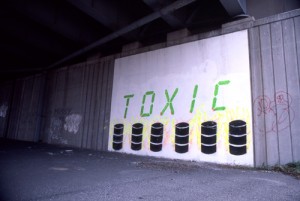It is common knowledge that we are polluting our environment at an alarming rate. But since we are actually one of the species on the planet we are also polluting ourselves. Hundreds of chemicals are inside each of us. The Center for Disease Control (CDC) tested hundreds of people through its bio-monitoring program and found small amounts of chemical pollutants in each person tested.1 Not one person was free of chemicals and some, like DDT have been banned for decades. While we thought previously that the placenta protected the unborn fetus from harmful exposures; research done by the Environmental Working Group has shown that even umbilical cord blood can contain small amounts of these chemicals.2
When we think of pollution we think of the environment, but all living things, including humans are at risk. Many of these chemicals are called persistent organic pollutants (POPs), because they enter the body, but have no easy way out. They poison our mitochondria, disrupt our cell membranes, interfere with our own hormones and affect the action of our body’s enzymes – the very proteins that help coordinate all the processes that are essential to life.
What are these chemicals? There are over 80,000 chemicals in use today, but only one percent of these have been studied for safety. It would be impossible to mention all of them here, however, let’s take a trip down chemical lane:
Phthalates
A plasticizer found in many of those cute toys your child or grandchild puts into their mouth, but also can be found in cosmetics, scented soaps and deodorants.
Bisphenol A (BPA)
This compound is used in plastic food and beverage containers, and is in the resin that lines most metal food cans. BPA is a compound that mimics the female hormone, estrogen.
Perfluorooctanoic acid (PFOA)
PFOA is used to make water-repellant apparel and non-stick cookware and utensils.
Polybrominated diphenyl ether (PBDE)
PBDE is a neurotoxic chemical flame retardant widely used in the manufacture of TVs.
Polychlorinated biphenyls (PCBs)
PCB is an industrial insulator, which has been found in ocean fish and even in some fish oil supplements.
Heavy metals
Heavy metals, such as mercury enter the environment from coal burning and lead can leach into the water supply from old plumbing pipes.
DDT
DDT is a powerful insecticide banned in the U.S. more than 30 years ago, however the U.S. is still the largest producer of DDT for export.
Atrazine
This is common pesticide used on corn crops and is a powerful endocrine disruptor, even at very low doses. Many endocrine disruptors mimic the effects of the female hormone estrogen.
What can the health conscious consumer do about it? Choose alternate products. First and foremost be an educated consumer, read the labels on the products you purchase and vote with your dollar.
Ten tips to reduce your environmental chemical exposure:
1. Try to eat fresh food as much as possible and avoid canned food.
2. Eat organic as often as possible, especially when purchasing the “dirty dozen” fruits and vegetables.3
3. Avoid cooking food in plastic containers in the microwave. Avoid standing near a microwave while it is on.
4. Avoid non-stick cookware. Buy stainless steel, hard-anodized aluminum and cast-iron instead.
5. Use a cost-effective carbon filter for your drinking water or install a reverse osmosis filter or water alkalizer.
6. Remove your shoes at the entrance to your home to avoid tracking in pesticides and other chemicals into your home.
7. Vacuum, mop and wipe down all surfaces weekly.
8. Check the labels of personal care products, and avoid purchasing those that contain phthalates or “fragrance,” a code word for diethyl phthalate, which does not have to be listed.
9. Buy BPA-free baby bottles.
10. Replace plastic water bottles, with stainless steel containers and make sure they are not lined with BPA.
Author: Vincent Pedre, M.D. – Integrative, Holistic General Practitioner and Board-Certified Internist in private practice in New York City.
——————————————————————————————————————1. The Fourth National Report on Human Exposure to Environmental Chemicals, Centers for Disease Control and Prevention. http://www.cdc.gov/exposurereport/pdf/FourthReport_ExecutiveSummary.pdf
2. Kids Safe Chemical Act: 10 Americans. Environmental Working Group, http://video.yahoo.com/watch/6431545/16676271
3. EWG’s Shopper’s Guide to Pesticides http://www.foodnews.org/executive.php
Dr. Vincent M. Pedre, Medical Director of Pedre Integrative Health and President of Dr. Pedre Wellness, is a Board-Certified Internist in private practice in New York City since 2004. His practice spans the scope from Western medicine to Eastern philosophy. He is a Clinical Instructor in Medicine at the Mount Sinai School of Medicine and certified in yoga and Medical Acupuncture. His unique combination of medicine is best described as integrative or defined by a functional, systems-based approach to health. With his holistic understanding of both sides of the equation, he can help each patient choose the best course of action for their ailments to provide both immediate and long-term relief.



